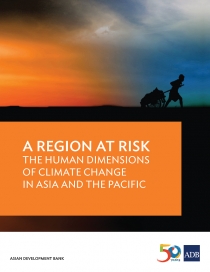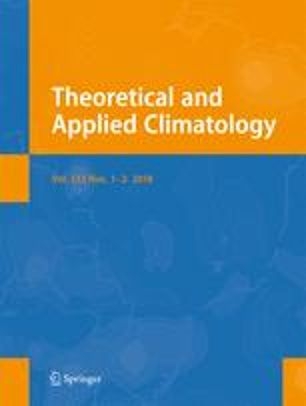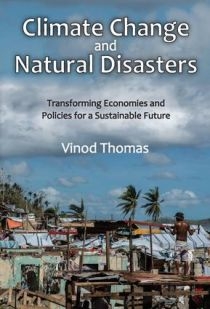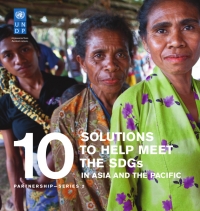Harvested Publications
There are few studies in the Philippines that analyze poverty dynamics and studies that analyze the effects of weather variability on food poverty dynamics are even fewer. Given that there are some sectors that are more adversely affected by the changing weather patterns, a study analyzing the effects of weather variability on poverty is essential. Using a simple spells approach to understand the food poverty dynamics in the Philippines, this paper finds that deviation of rainfall from its normal values…
Recent regional climate change projections have consequences for human systems, particularly for developing countries in Asia and the Pacific. Asia and the Pacific continues to be exposed to climate change impacts. Home to the majority of the world’s poor, the population of the region is particularly vulnerable to those impacts. Unabated warming could largely diminish previous achievements of economic development and improvements, putting the future of the region at risk. The report discusses the most recent projections pertaining to climate change and climate change…
Abstract Here, we review the impacts of recent natural disasters in developing countries on rural agriculture and livelihoods with the objective of understanding gaps and providing recommendations. Lessons from these disasters demonstrate that national governments, aid agencies, and international/non-governmental organizations (I/NGOs) are effective primarily at distributing short-term products (e.g. food packages and tarpaulin) to cities. Such products are inexpensive, simple to procure, and easily quantifiable for donors. Unfortunately, the literature suggests that many national governments and foreign NGOs are ineffective…
Climate is changing and evidence suggests that the impact of climate change would influence our everyday lives, including agriculture, built environment, energy management, food security, and water resources. Brunei Darussalam located within the heart of Borneo will be affected both in terms of precipitation and temperature. Therefore, it is crucial to comprehend and assess how important climate indicators like temperature and precipitation are expected to vary in the future in order to minimize its impact. This study assesses the application…
Providing street and public lighting is one of the most expensive responsibilities of a municipality. This report presents lessons from a pilot LED project in Indonesia. Providing street and public lighting can account for up to 38% of energy consumption and greenhouse gas emissions in some cities. New energy-efficient technologies and design can cut street lighting costs dramatically (up to 60%) and reduce greenhouse gas emissions by the same amount. These savings can reduce the need for new generating plants…
This brief discusses remote sensing technology as a powerful tool in understanding basin water resources. In a pioneering collaborative study, a research team from IHE Delft Institute for Water Education is working closely with ADB operations departments using remote sensing to understand how water resources are used in project sites in six countries: Cambodia, India, Indonesia, Pakistan, Sri Lanka, and Viet Nam. Using remote sensing technology, for the first time, water productivity can be measured right down to the farm level. For years, the limitation has always been the lack…
By 2050, agriculture will need to produce 100% more food in developing countries. Improved irrigation productivity and greater financial sustainability are critical. Water resources are becoming increasingly scarce in the Asia Pacific region. By 2050, agriculture will need to produce 100% more food in developing countries. Climate change and rapid population growth will place new pressures on already scarce water resources. Improved irrigation productivity—more crop per drop—and greater financial sustainability are critical. Estimates for the Asian region place a $12.31…
In 2014, 17.5 million people were displaced by climate-related disasters, ten times more than the 1.7 million displaced by geophysical hazards. What is causing the increase in natural disasters and what effect does it have on the economy? Climate Change and Natural Disasters sends three messages: human-made factors exert a growing influence on climate-related disasters; because of the link to anthropogenic factors, there is a pressing need for climate mitigation; and prevention, including climate adaptation, ought not to be viewed…
This publication shows how change works. It is a collection of 10 transformative development stories for development practitioners. It explains how the featured projects have yielded lasting, far-reaching results, and accelerated early progress on multiple Sustainable Development Goals. The interventions profiled here demonstrate how much can happen when commitment is sustained, and when governments, private sector, civil society, and UNDP work together. Innovation, delivering at large-scale, and partnership is key elements of the successful projects in the publication. These stories…
Executive Summary Myanmar, also commonly referred to as Burma, is one of the largest countries in South East Asia with 56 million people.4 Myanmar shares borders with China, Laos, Thailand, Bangladesh, and India. In the south, Myanmar has marine borders with the Andaman Sea and the Bay of Bengal. Myanmar is ethnically diverse with a majority of the population made up of Bamars. Eight major national ethnic races are present in Myanmar. Each ethnic race is comprised of diverse…






















